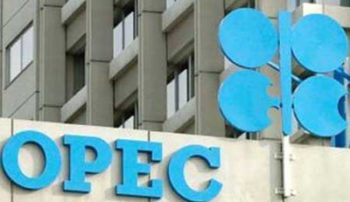
The Organization of the Petroleum Exporting Countries (OPEC) on Friday agreed on a modest increase in oil production from next month after its leader Saudi Arabia persuaded arch-rival Iran to cooperate.
This follows calls from major consumers to help reduce the price of crude and avoid a supply shortage.
However, the decision confused some in the market as OPEC gave opaque targets for the increase, making it difficult to understand how much more it will pump. Oil prices rose as much as 3 percent.
“Hope OPEC will increase output substantially. Need to keep prices down!” U.S. President Donald Trump wrote on Twitter less than an hour after OPEC announced its decision.
The United States, China and India had urged Vienna-based OPEC to release more supply to prevent an oil deficit that would hurt the global economy.
OPEC said in a statement that it would go back to 100 percent compliance with previously agreed output cuts but gave no concrete figures.
Saudi Arabia said the move would translate into a nominal output rise of around 1 million barrels per day (bpd), or 1 percent of global supply. Iraq said the real increase would be around 770,000 bpd because several countries that had suffered production declines would struggle to reach full quotas.
The deal gave a tacit green light to Saudi Arabia to produce more than currently allowed by OPEC as the 14-nation organisation avoided setting individual country targets.
Iran, OPEC’s third-largest producer, had demanded OPEC reject calls from Trump for an increase in oil supply, arguing that he had contributed to a recent rise in prices by imposing sanctions on Iran and fellow member Venezuela.
Trump slapped fresh sanctions on Tehran in May and market watchers expect Iran’s output to drop by a third by the end of 2018. That means the country has little to gain from a deal to raise OPEC output, unlike top oil exporter Saudi Arabia.
However, Saudi Energy Minister, Khalid al-Falih convinced his Iranian peer, Bijan Zanganeh, to support the increase just hours before Friday’s OPEC meeting.
OPEC and its allies have since last year been participating in a pact to cut output by 1.8 million bpd. The measure had helped rebalance the market in the past 18 months and lifted oil to around $75 per barrel from as low as $27 in 2016.
But unexpected outages in Venezuela, Libya and Angola have effectively brought supply cuts to around 2.8 million bpd in recent months.
The output boost agreed on Friday had been largely priced into the market and was seen as modest.
Agency Report